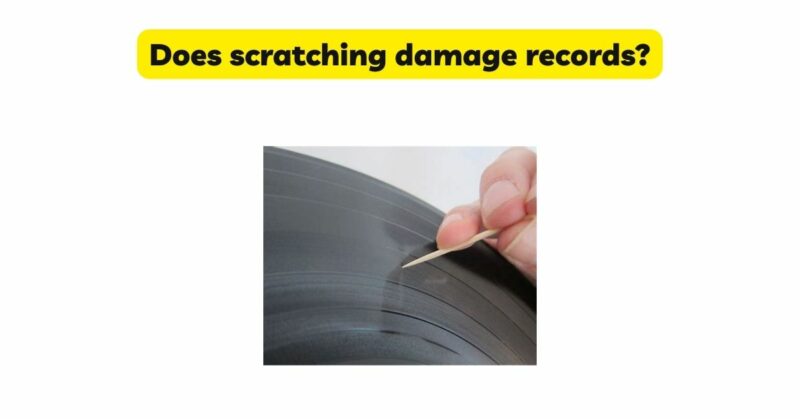Scratching has become a defining technique in the world of DJing, known for its dynamic and rhythmic sound effects. However, one question that often arises is whether scratching can damage vinyl records. In this article, we delve into the art of scratching, exploring the mechanics behind the technique, the impact on vinyl records, and the measures DJs can take to minimize any potential harm. By understanding the intricacies of scratching, considering the durability of vinyl records, and implementing proper techniques and equipment, we aim to uncover the truth about the potential impact of scratching on the lifespan of records.
I. Mechanics of Scratching
To determine the potential impact of scratching on vinyl records, it’s essential to understand the mechanics involved in the technique. Here are some key factors to consider:
- Stylus and Cartridge Design: The stylus and cartridge are critical components of a turntable setup for scratching. DJ-specific cartridges often feature robust designs with durable styli that are capable of withstanding the rigors of scratching.
- Tracking Force and Anti-Skate: Proper tracking force calibration and anti-skate adjustment are essential. This ensures that the stylus remains in the grooves and minimizes lateral movement, reducing the risk of damaging the record.
II. Vinyl Record Durability
Vinyl records are designed to withstand repeated plays, including scratching. Understanding their durability and resilience is crucial in assessing the potential for record damage. Let’s explore some key aspects:
- Vinyl Composition: Vinyl records are made from a resilient material known as polyvinyl chloride (PVC). This material is known for its durability and ability to handle the wear and tear associated with repeated stylus contact.
- Groove Structure: The grooves on vinyl records are designed to withstand the tracking of the stylus. The depth and width of the grooves provide the necessary space for the stylus to move without causing significant damage.
III. Techniques and Equipment to Minimize Damage
Experienced DJs employ specific techniques and use appropriate equipment to minimize the potential damage caused by scratching. Here are some essential practices:
- Controlled Pressure: Skillful DJs exert controlled pressure on the record, ensuring that the stylus stays within the grooves without digging too deep. This reduces the risk of causing excessive wear or scratches.
- Slipmats and Vinyl Protection: DJs often use slipmats placed between the record and the platter to minimize friction and protect the vinyl surface. Slipmats made from materials like felt or cork provide a smoother surface, reducing the potential for scratches.
- High-Quality Needles and Cartridges: Investing in high-quality needles and cartridges designed for scratching can help minimize potential damage to records. These components are built to handle the demands of scratching and provide accurate tracking.
- Record Rotation: DJs frequently rotate their records, distributing the wear across different sections of the vinyl. This practice helps minimize excessive wear on specific areas and extends the lifespan of the record.
- Record Maintenance and Care: Proper record maintenance, including regular cleaning and storage in protective sleeves, is crucial to preserving the integrity of vinyl records. Clean records and a dust-free environment minimize the potential for scratches caused by debris.
IV. DJ Scratching as an Art Form
Scratching is an art form that requires skill, creativity, and precision. Skilled DJs understand the importance of record preservation and take measures to minimize damage. While some light scratches may occur during scratching sessions, these are often considered acceptable and do not significantly affect the listening experience.
Conclusion
Contrary to popular misconceptions, scratching, when executed with skill and care, does not inherently damage vinyl records. Vinyl records are designed to endure the stylus contact involved in scratching, and DJs can take various measures to minimize any potential harm. By using proper techniques, high-quality equipment, and maintaining records appropriately, DJs can continue to push the boundaries of their art form while preserving the longevity and quality of their vinyl collections. It is crucial to approach scratching as an expressive and innovative technique that contributes to the rich culture of music, rather than viewing it as a threat to record damage.


